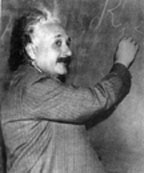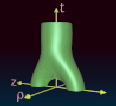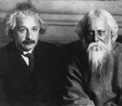|
Prerequisites:
| I assume you have a good foundation in standard undergraduate physics:
classical mechanics, electromagnetism, and the usual sophomore-level special relativity.
Also you should have a
mathematics background in calculus, differential equations, and linear algebra.
The mathematics of general relativity is
differential geometry, but I am not assuming you have had
any studies on that before, except for linear algebra.
Our discussions on special relativity will take you from the material in introductory physics to becoming familiar with the use of 4-vectors in spacetime and the use of Minkowski diagrams to better visualize what is the underlying physics.
|
|
Method:
| Undergraduates should register for Phys. 480-001, while graduate students should register for Physics 581-001.
Everyone will be involved in the same weekly lectures; however requirements for graduate students will be somewhat more demanding, particularly in that there will be some few special assignments only for them.
It would be very helpful for everyone to also register for the 1-hour per week problem session, which is graded CR/NC, Physics 451-012.
Various sorts of things will happen there, varying from students working through problems, perhaps assigned in advance, to my trying to explain some things that have been unclear before.
|



![]()
 Click here to mail your
Click here to mail your 